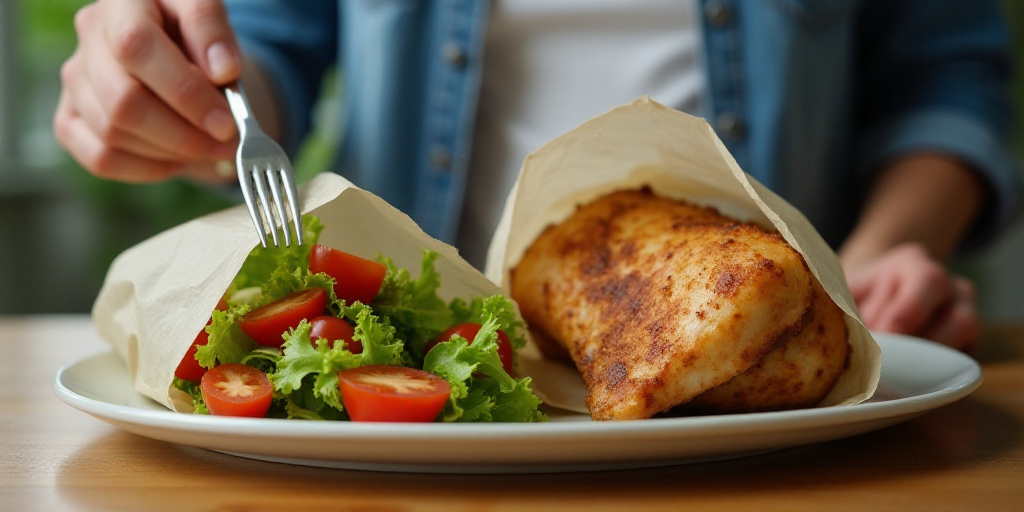Personal Story: Andrea’s Experience with Food Delivery Apps
During the pandemic, Andrea and her partner avoided going out as much as possible due to fear of contracting Covid-19. Their solution was to order food for delivery almost daily through apps like Uber Eats, Didi Food, and Rappi. However, this led to a significant strain on their finances.
On average, they spent around 9,000 pesos per month for about three months, covering the cost of food, app commissions, and delivery person tips. This amount represented approximately 25% of Andrea’s monthly income.
“Even though the prices were low, each order of tacos, tortas, or nuggets cost around 400 pesos. When I saw the total, I thought, ‘Enough!’ It was Didi Food and Uber Eats with their high commissions,” Andrea recalls.
She acknowledges that the issue wasn’t just about excessive spending but also poor financial management. “When you have your card linked, you lose all control; it was an unsustainable pace,” she explains.
The Rising Trend of Food Delivery in Mexico
Andrea’s situation isn’t unique. More and more Mexicans are turning to food delivery services, as per a study by Censuswide commissioned by Deliverect. 65% of the population ordered food or takeout via delivery apps at least three times a week.
Mexico is the second-largest market for food delivery in Latin America, with estimated revenues of 2,530 million USD by 2024, just below Brazil, according to Statista.
“Food delivery has become a routine for millions worldwide. DoorDash confirms that more people rely on delivery and takeout to adjust their schedules, save time, and enjoy quality food at home,” Deliverect, an order management platform, states.
Be Mindful of Your Finances
Ordering food for home consumption doesn’t need to be vilified, but it’s crucial to exercise better control when making orders, as it can easily turn into a challenging expense, like in Andrea’s case.
The National Commission for the Protection and Defense of Financial Users (Condusef) advises considering delivery costs, as they can include various fees to safeguard your wallet.
App Commission Charges
Charges vary based on location, restaurant type, service time, order size, platform promotions at the time of ordering, and membership benefits offered.
According to a survey conducted by this publication with workers from several platforms, user commissions range from 15% to 30% of the food sales.
For instance, Mónica ordered sushi for three people via Didi Food. The food cost was 470 pesos, but the final amount paid was 610 pesos, an extra 140 pesos. After investigating, she discovered that the additional amount was the service commission and other charges, equivalent to 30% of her order.
Esteban had a similar experience. He ordered a burger priced at 190 pesos in a restaurant, but through delivery, he ended up paying 260 pesos, including the tip.
“Not everything goes to the worker; it’s actually a small part, which is why client tips are crucial,” says Aldo, who believes it’s fair that delivery workers receive social security benefits.
The Federal Prosecutor for Consumer Affairs (Profeco) notes that restaurants often raise prices due to app commissions.
Tips for Saving Money
Weekly food orders can cost you between 5,564 pesos and 11,752 pesos annually, according to Kubo Financiero’s estimation based on Finerio data.
Here are six easy tips to help you save:
- 1. Don’t order without a coupon or promotion.
Food delivery platforms often offer discount coupons for initial orders; alternatively, look for promotions on app pages. - 2. Compare prices.
Check the dish you want to order across different apps; you might find cheaper options due to lower delivery costs or food prices. - 3. Split the costs.
Many apps offer buy-one-get-one-free deals. Coordinate with colleagues at work to share the expense. If there’s no one to split with, save the leftovers for the next day. - 4. Pay with a credit card offering rewards.
Since mobile food delivery apps allow electronic payments, use a bank card that rewards you for spending. - 5. Set a budget.
Recognize that sometimes ordering prepared meals is unavoidable. Prepare by estimating your monthly food expenses, including groceries and restaurant costs. Setting a limit will help you avoid overspending. - 6. Reduce ordering frequency.
If your record shows you order food once a week, try reducing it to every two weeks. This also saves on delivery fees and tips.
Ideally, prepare your own meals at home, as experts suggest you can save between 30% and 50% of your spending.
For comments, reach out to [email protected]






